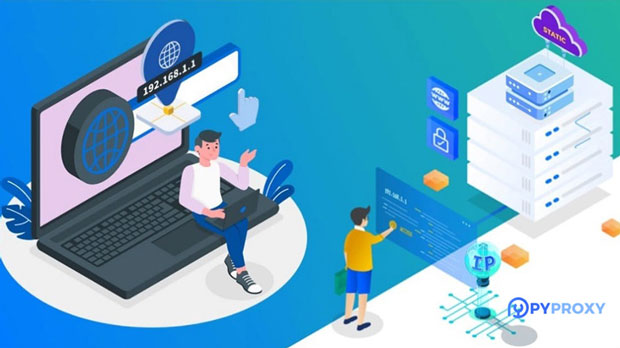In today’s digital landscape, businesses are increasingly relying on advanced technologies to ensure privacy, secure data transfer, and efficient web browsing. A professional socks5 proxy can be an invaluable tool for enterprises looking to manage these aspects while maintaining operational efficiency. socks5 proxies provide higher levels of anonymity, increased security, and more robust network performance compared to other proxy types. However, selecting and purchasing a SOCKS5 proxy service tailored to business requirements can be a complex process, involving technical considerations, performance requirements, and financial constraints. This article will guide you through the steps of selecting and purchasing a professional SOCKS5 proxy service that suits your company's needs. Understanding SOCKS5 Proxy and Its Benefits for BusinessSOCKS5 proxies are a type of internet protocol used to relay web traffic between a client (like a computer or mobile device) and a server. Unlike other proxy types, SOCKS5 is highly versatile and supports various protocols such as HTTP, FTP, and P2P. This flexibility makes it a popular choice for businesses that need to secure their online activities across various applications.The main advantages of using SOCKS5 proxies for businesses include:1. Enhanced Privacy and Anonymity: SOCKS5 proxies mask the user's IP address, ensuring that the business’s browsing activities remain anonymous. This is crucial for companies dealing with sensitive data or those that need to avoid surveillance or location-based restrictions.2. Improved Security: SOCKS5 supports a variety of authentication methods, making it more secure than its predecessors. It allows businesses to encrypt data, ensuring that sensitive communications are protected from potential cyber threats.3. Better Performance and Reliability: SOCKS5 proxies can handle large amounts of data and complex requests, offering better performance for tasks that require high-speed internet access, such as streaming, web scraping, or online research.4. Bypassing Geographical Restrictions: For businesses operating internationally, SOCKS5 proxies allow users to access region-restricted content and services by routing traffic through servers in different countries. This is beneficial for global market research, competitive analysis, or working with location-specific data.Key Factors to Consider When Purchasing a SOCKS5 Proxy ServiceWhen purchasing a professional SOCKS5 proxy service for business use, there are several key factors to keep in mind. These factors will help ensure that you select a service that aligns with your business needs, protects your network, and provides the best performance.1. Security Features: Security should be a top priority when choosing a proxy provider. Look for services that offer advanced encryption methods, IP authentication, and a no-logs policy. A reliable SOCKS5 proxy service should not store any logs of your online activities, ensuring privacy and compliance with data protection regulations.2. Speed and Performance: For many businesses, the speed of the proxy service is crucial. If your business involves data-heavy tasks such as video conferencing, media streaming, or web scraping, choose a provider that guarantees high-speed connections and minimal latency. Performance consistency is also essential, so ensure that the service can handle peak usage without compromising speed.3. Scalability: As your business grows, so will your need for more proxies. Make sure the SOCKS5 service provider can accommodate your future expansion. This includes offering customizable plans that allow you to scale up the number of proxy IPs or upgrade to higher bandwidth limits as needed.4. Server Locations: The geographical location of the proxy servers is another important consideration. If your business needs to access specific content or services from a particular country or region, ensure the provider has servers in those areas. A global network of proxy servers will allow you to perform tasks like bypassing geo-restrictions and conducting international market research effectively.5. Support and Customer Service: Reliable customer support is essential when dealing with technical issues or requiring assistance with setup. Opt for a service provider that offers 24/7 support through multiple channels such as email, live chat, or phone. Support should be able to assist with troubleshooting, configuration, and other technical aspects of managing your proxies.6. Pricing and Flexibility: Consider the pricing model of the service provider. While professional SOCKS5 proxies tend to be more expensive than basic proxies, look for providers that offer flexible pricing structures based on usage volume, server locations, and features. Many providers offer subscription-based pricing with monthly or yearly plans, while others may offer pay-as-you-go options. Choose a plan that best suits your budget and needs.Steps to Purchase and Set Up a SOCKS5 Proxy ServiceOnce you have identified a suitable SOCKS5 proxy service that meets your business requirements, the next step is the purchasing and setup process. Follow these steps to ensure a smooth transaction and configuration:1. Research and Compare Providers: Begin by researching different SOCKS5 proxy providers. Evaluate their offerings based on the factors mentioned above, including security, speed, scalability, and customer support. It's a good idea to read reviews, explore forums, and compare the technical specifications of each provider.2. Choose the Right Plan: Based on your business size and usage needs, select the most appropriate proxy plan. Small businesses may only need a few proxies, while larger enterprises might require a more extensive network of proxies with higher bandwidth.3. Create an Account and Subscribe: Once you've selected a provider and plan, create an account with the service provider. During the signup process, you'll be required to provide basic information, such as your business name, email address, and payment details.4. Configure the Proxy Settings: After subscribing, the provider will typically send you the necessary proxy details, including the server address, username, and password (if required). You can then configure your network settings on the devices or applications that will use the proxy. This may involve entering the proxy settings in your operating system’s network settings or configuring your browser or specific software to use the proxy.5. Test the Service: Before fully deploying the proxy service across your entire organization, it's important to test it. Verify that the proxy is working correctly by checking your IP address, browsing speed, and security measures. Running a few tests will ensure that everything is configured properly and functioning as expected.6. Monitor and Maintain the Proxy: Once the SOCKS5 proxy service is set up, regularly monitor its performance to ensure that it continues to meet your business needs. Many providers offer monitoring tools to track bandwidth usage, server load, and other critical metrics. If needed, you can adjust your service plan or settings to accommodate changes in your business operations.ConclusionPurchasing a professional SOCKS5 proxy service for your business requires careful consideration of several factors, including security, performance, scalability, and pricing. By thoroughly evaluating your options and understanding your business’s specific needs, you can select a service that offers optimal protection, speed, and functionality. Whether you're looking to enhance privacy, improve data transfer speeds, or bypass geographical restrictions, a professional SOCKS5 proxy can be an invaluable tool in achieving these objectives. Following a systematic approach to purchase and setup will ensure a smooth experience and help you make the most out of your investment in proxy services.
Jan 09, 2025






















































